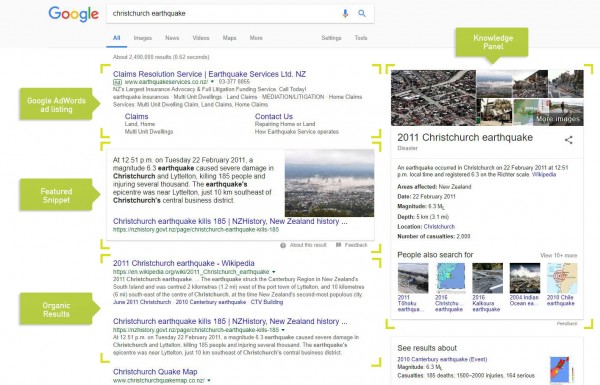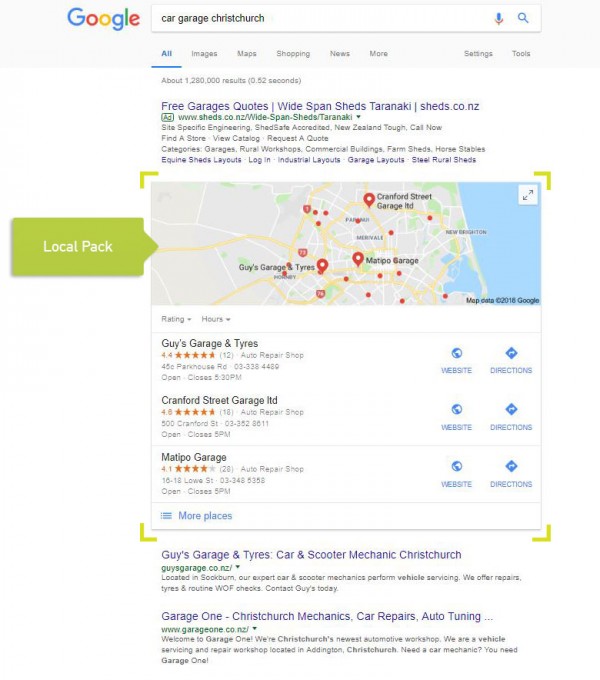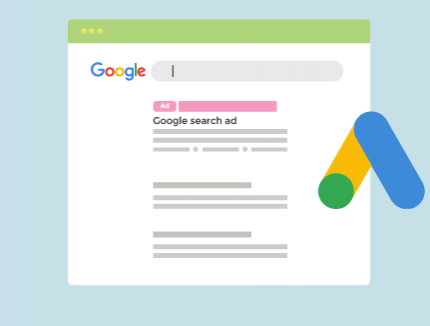BLOG
The Evolution of Google SERPs and How to Stay Visible Online
The nature of Google search and SERPs (Search Engine Result Pages) has undergone immense change over the last decade, and many SMBs have failed to adapt their digital marketing efforts to keep pace. Recently Google have been ramping up their efforts to make their SERPs more tailored to the user by way of ads, ‘featured snippets’, ‘local packs’ and other ‘Special Content Result Blocks’ (SCRBs). The effect of this is that the traditional ‘top-ten’ organic results are often appearing further down the SERP and subsequently attracting fewer clicks and generating less traffic. It begs the questions; is ranking ‘number one’ on SERPs still important, and how does a business penetrate the local pack, featured snippets and SCRBs and stay visible online?
Distant memories of a simpler time
A decade ago, Google was straight forward with SERPs, displaying a common list of ten blue links to what it deemed to be the pages most relevant to your search (pictured below). It’s no wonder then that marketing professionals held ranking highly in this list as the highest priority and crafted their SEO and digital marketing efforts to suit.
Ranking on page one of Google search results ultimately leads to organic traffic, which handled in the correct way, will translate into leads and conversions for your business. This is still true for digital marketing today, but because Google’s approach to how search results are produced and displayed is now evolving more frenetically than ever before, we must keep pace by adapting the content we produce and the approach we take to helping clients achieve online visibility.
How has Google personalised SERPs?
Motivated by providing faster and more personalised search results for users, Google now considers specific data points for each user to better understand the intent of their search and to tailor their search results accordingly. This began in 2005 when Google applied Personalized Search to the search experience of users logged in to their Google account. In 2009 they expanded this to include all users of Google search, tracking search queries and using them to enhance their offering.Today, Google personalises SERPs for each user by looking at their unique data points. These include the user’s:
- Previous search history (frequently searched phrases)
- Behaviour on SERPs (which links user clicked through to, and if they jumped back and forth from link to SERP having deemed the result irrelevant)
- Location (based on IP address and browser location settings)
- Device and location settings (mobile, tablet, desktop, etc.)
What are Special Content Result Blocks (SCRBs)?
As part of Google’s evolution of the SERP they have implemented panels containing what they consider to be information pertaining specifically to your search query. ‘Featured Snippets’ are Google’s “algorithmically generated highlights of what's available on the web that provide quick, relevant answers for your queries.” A ‘Knowledge Panel’ (formerly Knowledge Graph) appears to the right of main results on SERPs, showing quick-reference information regarding well-known entities like landmarks, events, esteemed people, movies and works of art.

Especially attractive to local businesses is the ‘Local Pack’ SCRB. This feature contains a Google Map of the user’s local area, highlighting three business listings that best relate to the search, and their contact details.

How can a business maximise their visibility in Google SERPs?
SEO is no longer about matching copy on your site with a commonly searched keyword. We’ve since moved on from this and Google’s moves to personalise search results mean we need to try harder to create quality content that is optimised for the objectives of our target audience. If we sell garden products we should be producing engaging and informative articles that are on topic and in line with the queries our green-thumbed audience will be searching for. If we’re a local restaurant we need to be consistent across all platforms that may list our details: Neighbourly, Yellow, Google Maps and other review sites and local directories. Getting frequent, high rating reviews is also key to improving visibility in this area of the SEPR and encouraging click throughs from potential customers.
Key to increasing your visibility on Google SERPs is to make sure your content engages the user when they click through from a results page. If your visitor doesn’t find what they’re looking for on your site and bounces back to the SERP, Google will recognise this, and it can negatively affect your rankings. If your users are failing to stay on your site (and ideally submit an enquiry or make a purchase), you need to take a good, hard look at how you’re your content matches the user’s intent and how engaging it is.
Mobile SERPs can be hard to infiltrate
At some point in 2018 Google will switch to primarily using the mobile version of a website's content to rank its pages. This, combined with the fact that more searches are now completed on mobile devices than on desktop, means that Google SERPs on mobile are very important for business. The unfortunate news is that due to the reduced screen real estate on a mobile device, your organic results are likely buried several scrolls down the page, beneath AdWords PPC ads and local pack. As organic traffic from mobile device becomes harder to attract, running a tightly targeted AdWords campaign can be a very effective way to combat this. Consider this with your next campaign and drop us a line if you’d like to find out more about PPC campaigns optimised for mobile.
Can personalised SERPs distort ranking results?
The personalisation of Google SERPs is important to consider when tracking and disseminating rankings. This is because the links and layout of an SERP we see will be based on our data points, not those of our target customers, and as such may vary tremendously. For instance, if we conduct a search for ‘car garage’ while browsing in Christchurch and it’s the tenth time we’ve done so, we’ll get very different SERPs than someone performing the search in Auckland, for the first time. This is something we constantly monitor and take into consideration when tracking the efficacy of our client’s SEO campaigns and their overall online visibility.
To learn more about Google SERPs and how to maintain your online visibility in the everchanging landscape, give us a call or send an email.









